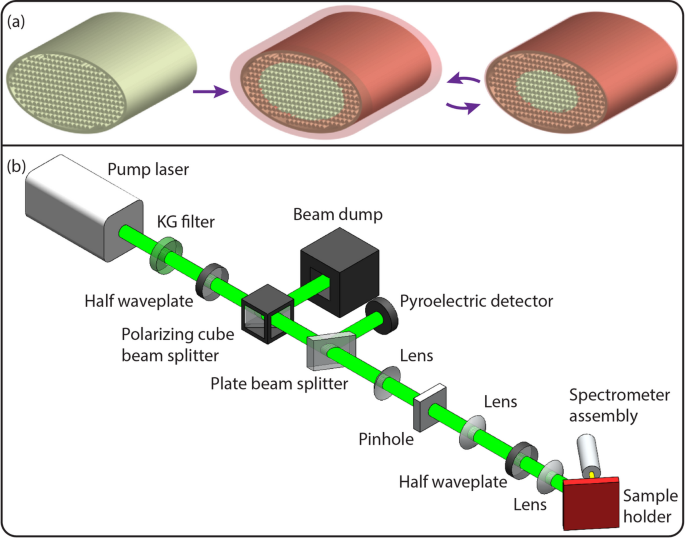
Spectral fingerprint of laser emission from rhodamine 6g infused male Indian Peafowl tail feathers
Scientific Reports volume 15, Article number: 20938 (2025 ) Cite this article
The light-emissive properties of dye-infused barbules from Indian Peafowl (Pavo cristatus) tail feathers is investigated at high intensities pumped at \(532\,\) nm. The dye-infused barbules were prepared by repeatedly wetting the eyespot with dye solution and allowing it to dry. While wet, and after wet/dry cycling, across multiple parts of the same feather as well as across different feather samples, a highly conserved set of laser wavelengths was observed. While most feedback mechanisms in biological materials have been attributed to random lasers, the results presented in this article are inconsistent with this mechanism, and they suggest a critical structure inside the barbules which persists through different color regions of the eyespot. The laser thresholds were found to be below the random laser threshold for these materials, and the laser emission indicates that feedback structures with small gain volumes can be measured using this technique. This study also illustrates how persistent small-scale structures in biological materials act as low-quality resonators whose dispersion imprints on subsequent laser emission.
Few technological breakthroughs have penetrated as deeply across different applications as the laser1,2. Many classes of traditional, quasi-one-dimensional, mirrored cavity lasers exist such as the gas laser, liquid dye laser, solid state laser, chemical laser, and semiconductor laser3. Laser emission can also be found in many nontraditional architectures including distributed Bragg reflector lasers4,5,6, distributed feedback lasers7,8,9, random lasers10,11,12,13,14,15,16, and whispering gallery mode lasers17,18.











